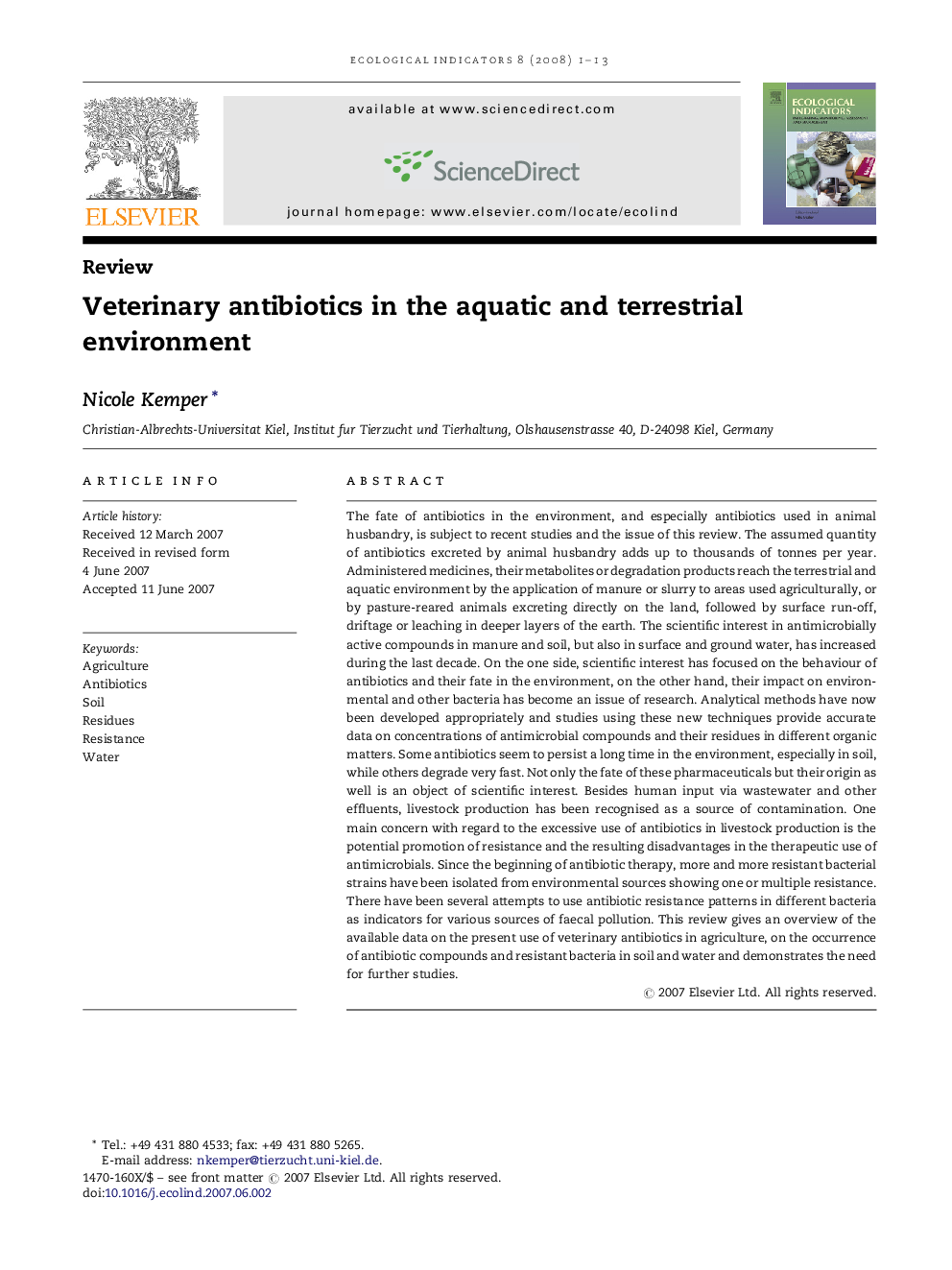| کد مقاله | کد نشریه | سال انتشار | مقاله انگلیسی | نسخه تمام متن |
|---|---|---|---|---|
| 4374599 | 1303182 | 2008 | 13 صفحه PDF | دانلود رایگان |

The fate of antibiotics in the environment, and especially antibiotics used in animal husbandry, is subject to recent studies and the issue of this review. The assumed quantity of antibiotics excreted by animal husbandry adds up to thousands of tonnes per year. Administered medicines, their metabolites or degradation products reach the terrestrial and aquatic environment by the application of manure or slurry to areas used agriculturally, or by pasture-reared animals excreting directly on the land, followed by surface run-off, driftage or leaching in deeper layers of the earth. The scientific interest in antimicrobially active compounds in manure and soil, but also in surface and ground water, has increased during the last decade. On the one side, scientific interest has focused on the behaviour of antibiotics and their fate in the environment, on the other hand, their impact on environmental and other bacteria has become an issue of research. Analytical methods have now been developed appropriately and studies using these new techniques provide accurate data on concentrations of antimicrobial compounds and their residues in different organic matters. Some antibiotics seem to persist a long time in the environment, especially in soil, while others degrade very fast. Not only the fate of these pharmaceuticals but their origin as well is an object of scientific interest. Besides human input via wastewater and other effluents, livestock production has been recognised as a source of contamination. One main concern with regard to the excessive use of antibiotics in livestock production is the potential promotion of resistance and the resulting disadvantages in the therapeutic use of antimicrobials. Since the beginning of antibiotic therapy, more and more resistant bacterial strains have been isolated from environmental sources showing one or multiple resistance. There have been several attempts to use antibiotic resistance patterns in different bacteria as indicators for various sources of faecal pollution. This review gives an overview of the available data on the present use of veterinary antibiotics in agriculture, on the occurrence of antibiotic compounds and resistant bacteria in soil and water and demonstrates the need for further studies.
Journal: Ecological Indicators - Volume 8, Issue 1, January 2008, Pages 1–13